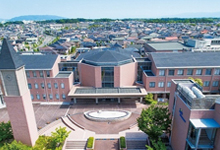Patients with musculoskeletal disorders become frightened of exercise by experiencing repeated pain with each movement.And when exercise fear occurs, he adapts his body's exercise strategy to minimize pain.For example, if slow movement reduces pain, the patient adapts to slow movement of the limb, but these protective exercise strategies promote organic and pain in the body and are greater. It may lead to.
This time, the group at Kio University and the University of Tokyo used a pain fear conditioning model in the reach-grabbing exercise (pain is given immediately after the subject completes the exercise to reach the target), and anticipation and fear of pain are expressed. We investigated how to change the locus of movement and muscle contraction.As a result, due to the anticipation and fear of pain associated with exercise, "feedback exercise control" that adjusts the exercise based on the obtained sensation is first slowed down, and then "feedforward exercise control" that performs the exercise predictively. Was found to slow down.It was also found that the background of this modulation is related to the increase in co-contraction of agonist / antagonist muscles.
On the other hand, it was also found that when the pain associated with exercise disappeared, the slowing and co-contraction of exercise gradually returned to normal.For this modulation as well, the feedback control was restored first, and then the feedforward control was restored.
These results suggest that protective motor abnormalities in musculoskeletal disorders may be caused by motor fear.It also suggests that it is important to evaluate the processes by which motor control disorders occur in order to identify the factors that influence the chronicity of pain.In the future, he plans to conduct a more detailed analysis of motor control and muscle output due to musculoskeletal disorders, and then consider interventions based on the results.
Paper information:[Scientific Reports] Kinematic Changes in Goal-directed Movements in a Fear-conditioning Paradigm


